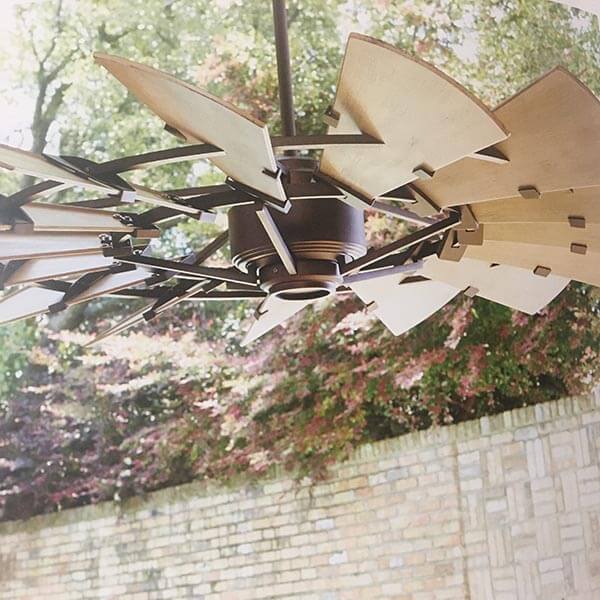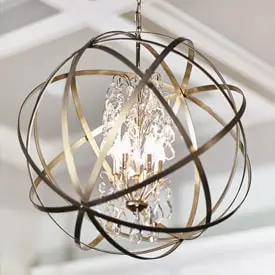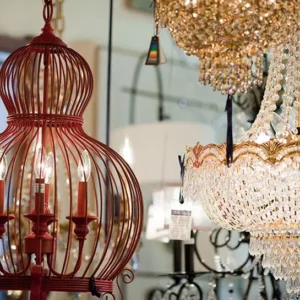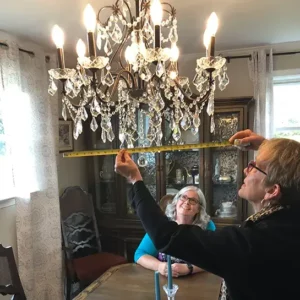We just hung a 72″ fan in our showroom at Nancy B’s. Think about that. Seventy two inches is six feet. It looks like a helicopter and boy oh boy does it move the air. Believe it or not, many large rooms with high ceilings require such a size. This Quorum Windmill fan is offered in several other sizes as well. Often, our clients ask us what size fan they need. We tell them if the room is 8 x 10, use a 44″ fan. If the room is 10 x 12, use a 52″ fan. But if the room is 12 x 15 or greater, consider a 56″, 60″ or 72″ fan. After all, size counts.
Have you ever heard of a DC motor? No, not Washing DC but a direct current (DC) motor. It is a fairly simple electric motor that uses less electrical current by utilizing powerful magnets of opposite polarity. These magnets create an internal magnetic force that works to rotate the motor, resulting in significant energy savings.
When shopping at your grocery store, you always read the labels which tells you all sorts of things besides calories, fat and salt content. The same applies to buying fans. Read the labels before purchasing a fan. The labels tell you the fan speed, the airflow (CFM), the power use (Watts) and the airflow efficiency (CFM/Watts). Most of the fans we offer, have a life time warranty on the motor. So select the right fan and you will have many, many years of enjoyment.
Remember to consider your ceiling height, there should be at least 7 feet of clearance under your ceiling fan blades. The standard 4″ to 6″ downrod should work in most 8′ ceilings. I seldom suggest a “hugger” unless your ceiling is only 7″ tall. Using a short downrod that comes with fans positions the blades far enough from the ceiling to have enough “supply” air above the blades to provide good air movement. When you flush a fan to the ceiling without using a downrod, air movement is reduced.
Another important item is a sloped adapter kit. Most fans have mounting brackets which allow mounting on ceiling slopes from 22 degrees or a 5/12 pitch to 39 degrees, a 10/12 pitch. A sloped adapter allows mounting on ceilings up to 45 degrees or a 12/12 pitch.
One last bit of info for you folks who love learning about fans: for year-round comfort remember the following. In the summer, you want your fan blowing downward creating a cooling breeze below the fan which is counterclockwise. The thermostat may then be raised, resulting in reduced energy consumption. In the winter or in colder weather, operate the fan in the slow speed in the reverse direction (clockwise). This redistributes the trapped warm air at the ceiling to provide even heat throughout the room. The thermostat may then be lowered for more efficient energy consumption.
If you have other questions, please call or visit us and we will be happy to help.







